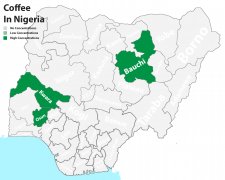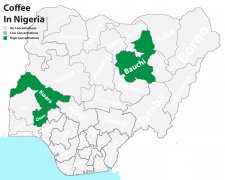Other uses and benefits of coffee cherries Cascara Cascala Tea Coffee Pulp is good for Health?
Other uses and benefits of coffee cherries
The use of coffee fruits is not only better for the environment, but also has impressive health benefits. It is rich in antioxidants and can provide you with solid health promotion.
Some innovative coffee producers will not stop at Cascala tea. Today, coffee fruits are used to produce different products, such as butter, chocolate and even popsicles, taking gourmet coffee recipes to a new level.
The Hawaiian company has discovered the anti-inflammatory properties of coffee fruits, using pulp to provide excellent health benefits for coffee and even making coffee juice.
The National Institutes of Health lists coffee cherries as 10 times the antioxidant level of pomegranate or green tea. This is why some skincare companies use coffee fruits to give their products excellent performance and prevent skin aging.
The most common use of fruit shells obtained by natural processing is to make so-called Cascala tea. It is rich in antioxidants and tastes delicious. It also provides solutions to agricultural inefficiency and provides additional sources of income for coffee farmers.
Is it inspection, coffee, or something in between?
Although this coffee cherry tea has appeared in cafes around the world, it is still not common. Cascara skin, which means "shell" or "pulp" in Spanish, differs from traditional tea in that it is larger and looks more like dried raisins or nut shells.
Ascara tea can be brewed like tea or brewed in a pressure pot, and the specific ratio of fruit shell to water will affect the final cup. Since Cascala is still a brand new drink, at least in the modern world, it provides space for test proportion and soaking time.
Cascara comes from coffee plants, but its taste is completely different from coffee, because most of the flavor of coffee beans is formed during roasting. Usually, it is described as having a sweet taste similar to fruit, berries, hibiscus and even tobacco. Some producers say some flavors of cherries can predict the aroma of roasted coffee.
Bolivia usually drinks cascara tea made from coffee cherries, usually with a few strips of cinnamon, known as "coffee for the poor". It is also believed that even before the invention of traditional coffee, people in Yemen drank it.
Coffee beans get caffeine from cherries, but the caffeine content is still low when the remaining shells are brewed into kascala tea. It is similar to ordinary tea that also contains caffeine, but the content is negligible compared to a cup of coffee. Therefore, for those who do not want to give up coffee plants but want to reduce caffeine and stress, this may be a good choice.
Important Notice :
前街咖啡 FrontStreet Coffee has moved to new addredd:
FrontStreet Coffee Address: 315,Donghua East Road,GuangZhou
Tel:020 38364473
- Prev

Explore the coffee industry in Nigeria () Nigeria coffee bean flavor production development story and brand
Coffee was first introduced to Nigeria in the late 19th century and first recorded exported in 1896. Coffee has been a major cash crop for farmers in the country for decades. However, into the 21st century, coffee production in the country began to decline. Although Nigeria farmers planted about 89,000 60-kilogram bags of coffee in 2006, that number
- Next

Flavor and taste characteristics of Arabica coffee beans in Nigeria and coffee bean producing countries in Africa
Nigeria Arabica Coffee production although Robusta coffee accounts for most of the country's coffee, a small number of small farmers in Nigeria have begun to grow higher quality Arabica coffee. However, due to lack of awareness, limited market access and very small harvests, there is little reason to grow it. Arabica coffee is grown only in two states: the Kros River and Talaba. According to one
Related
- Detailed explanation of Jadeite planting Land in Panamanian Jadeite Manor introduction to the grading system of Jadeite competitive bidding, Red bid, Green bid and Rose Summer
- Story of Coffee planting in Brenka region of Costa Rica Stonehenge Manor anaerobic heavy honey treatment of flavor mouth
- What's on the barrel of Blue Mountain Coffee beans?
- Can American coffee also pull flowers? How to use hot American style to pull out a good-looking pattern?
- Can you make a cold extract with coffee beans? What is the right proportion for cold-extracted coffee formula?
- Indonesian PWN Gold Mandrine Coffee Origin Features Flavor How to Chong? Mandolin coffee is American.
- A brief introduction to the flavor characteristics of Brazilian yellow bourbon coffee beans
- What is the effect of different water quality on the flavor of cold-extracted coffee? What kind of water is best for brewing coffee?
- Why do you think of Rose Summer whenever you mention Panamanian coffee?
- Introduction to the characteristics of authentic blue mountain coffee bean producing areas? What is the CIB Coffee Authority in Jamaica?

